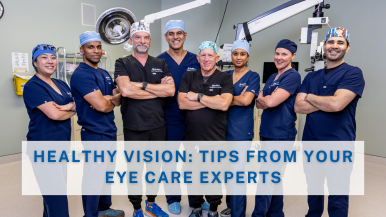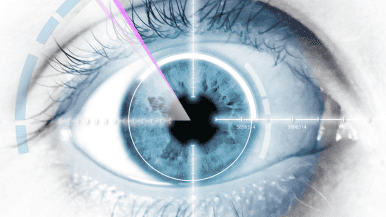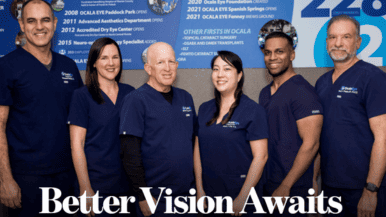Thanks to her advanced cataract surgery with the team of board-certified ophthalmologists at Ocala Eye, Lynne has her full range of vision back and is back on the golf course. Over five years, Lynne’s cataracts caused her vision to deteriorate to the point where she needed glasses just to accomplish even the most routine tasks. “I was diagnosed with cataracts about five years ago,” says Lynne. “They grew, gradually got worse, and I couldn’t see at a distance very well. I love playing golf, so that was a problem. And I had to have glasses to read and to turn the computer on and off. ”
After she received a personal recommendation for Ocala Eye, Lynne decided to pursue her treatment with the practice. “A friend of mine had gone to Ocala Eye, and she said it was a great experience, so I thought, that’s what I’ll do,” Lynne continues. “They did a great job. I had no pain and no after-effects. I would definitely recommend Ocala Eye because I had the best experience ever.”
What is a Cataract?
A cataract is the natural, age-related, clouding of the human lens of the eye. For people who have cataracts, seeing through cloudy lenses is like looking through a frosty or fogged-up window. Clouded vision caused by cataracts can make it more challenging to read, drive a car (especially at night) or see the expression on a friend’s face.
More than 24.4 million Americans have cataracts, and the condition primarily affects older individuals. By age 80, more than 50% of all people in the US either have a cataract or have had cataract surgery.
Signs and symptoms of cataracts include:
- Cloudy, blurry or dim vision
- Increasing difficulty seeing at night
- Sensitivity to light and glare
- Seeing “halos” or “star burst” around lights
- Frequent changing of eyeglass or contact lens prescription
- Double vision in a single eye
Initially, patients may not notice any vision loss as the cloudiness caused by a cataract may affect only a tiny portion of the eye’s lens. As the cataract progresses, it clouds more of the lens, increasing the distortion or blurring of light passing through it. This may lead to more noticeable symptoms.
How Does Advanced Cataract Surgery Work?
Advanced cataract surgery is one of the most successful surgical procedures in modern medicine. At the time of advanced cataract surgery, your natural, cloudy lens (cataract) is removed and a new lens is implanted into your eye. The lens implant remains in your eye for the rest of your life and can help you see much better, often without glasses.
Lynne’s experience confirmed it. She greatly appreciated not only the outcomes of both her cataract surgeries, but the warm and personalized attention she received from the entire Ocala Eye team.
“We decided on a date for the surgery,” says Lynne. “The surgery center was great. The people there were really professional. I used the drops after the first surgery in July. And then I went back in August for the second surgery. It was the same experience. I heard other less favorable stories about cataract surgery, but this one was wonderful. I had no problems at all. So I will definitely continue with all my appointments.”




